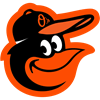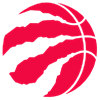As of the conclusion of the 2014 season, Felix Hernandez had long been considered a de facto fantasy ace, rattling off a 3.06 ERA or lower in five of the previous six seasons and finishing in the top-10 overall fantasy players in three of six seasons – including when he sparkled with a 2.14 ERA in 2014.
He slipped in 2015, with a 3.53 ERA, which included a second-half stumble highlighted by a 6.60 ERA in August.
Hernandez looked like he was fixing those issues through his first nine starts last season, in which he posted a 2.21 ERA with 47 strikeouts in 57 innings. Despite that hot start, I argued for selling him. After all, he had 25 walks in that time (a whopping 3.95 per nine innings), and his velocity was questionable.
Naturally, he gave up six runs in his next start and soon after landed on the disabled list with a strained right calf. So much for flipping him to an unsuspecting owner.
After he returned on July 20, King Felix mostly looked like a jester, with a 4.48 ERA and just 69 strikeouts in 90.1 innings – while unfortunately keeping terrible control at 3.89 BB/9.
He ended with ugly numbers:
3.82 ERA (highest since 2006)
1.32 WHIP (highest since 2008)
7.16 strikeouts per nine innings (career low)
3.82 walks per nine innings (career high)
1.88 K/BB (career low)
1.12 HR/9 (career high)
Is he capable of turning things around as he turns 31 this season?
As of the conclusion of the 2014 season, Felix Hernandez had long been considered a de facto fantasy ace, rattling off a 3.06 ERA or lower in five of the previous six seasons and finishing in the top-10 overall fantasy players in three of six seasons – including when he sparkled with a 2.14 ERA in 2014.
He slipped in 2015, with a 3.53 ERA, which included a second-half stumble highlighted by a 6.60 ERA in August.
Hernandez looked like he was fixing those issues through his first nine starts last season, in which he posted a 2.21 ERA with 47 strikeouts in 57 innings. Despite that hot start, I argued for selling him. After all, he had 25 walks in that time (a whopping 3.95 per nine innings), and his velocity was questionable.
Naturally, he gave up six runs in his next start and soon after landed on the disabled list with a strained right calf. So much for flipping him to an unsuspecting owner.
After he returned on July 20, King Felix mostly looked like a jester, with a 4.48 ERA and just 69 strikeouts in 90.1 innings – while unfortunately keeping terrible control at 3.89 BB/9.
He ended with ugly numbers:
3.82 ERA (highest since 2006)
1.32 WHIP (highest since 2008)
7.16 strikeouts per nine innings (career low)
3.82 walks per nine innings (career high)
1.88 K/BB (career low)
1.12 HR/9 (career high)
Is he capable of turning things around as he turns 31 this season?
What Happened?
Seattle general manager Jerry Dipoto recently said, "The demise of Felix Hernandez is being grossly exaggerated. He's still a very good major league pitcher." Gotta love team speak.
This blind optimism fails to acknowledge that sometimes, young studs have a few big hiccups as the years add up (see: Hanley Ramirez), and Hernandez's workload certainly could've caused much of what ailed him last year.
From 2006 to 2016, Hernandez led all pitchers with 2,331.1 innings and ranked third in pitches thrown (35,754). That mileage now may be gnawing at the 12-year veteran's chances of a rebound to his former elite status.
His four-seam fastball velocity hit a career low (90.5 mph), which in turn caused him to post his lowest swinging-strike rate since 2011 (9.6 percent) and a career-low first-strike percentage (a horrific 59.2). Dwindling giddy-up and a tentative approach around the strike zone make for a bad combo for an aging pitcher who's moving away from using his fastball – specifically, at fewer than 20 percent of his arsenal distribution for the third consecutive year.
Other bad stuff:
• 4.63 FIP (career high)
• 73.5 left-on-base percentage (lowest since 2011)
• 18.6 strikeout percentage (career low)
• 1.30 HR/9 in the second half
• Career-low PITCHf/x ratings for his sinker and curveball, which he combined to amass 50.5 percent of his arsenal last year
While his ever-expanding resume looks like it's affecting him, coming back from that calf injury compounded the issues. His arduous recovery involved at least one setback. Pitchers sometimes can have just as much trouble rebounding from lower-body injuries than anything related to the arm or shoulder.
Hernandez likely struggled with his back leg's push-off from the mound. After all, he said in late July that his mechanics were still rusty after two starts following his return, as he was leaving too many pitches up and/or over the middle. That helps to explain the increase in long balls.
How Can He Recover?
Hernandez posted his lowest groundball rate (50.2 percent) since 2012, but … of course, any pace of 50-plus is still excellent and worth some trust.
His changeup, while still a bit close in speed to his fastball, again ranked as his best offering, according to PITCHf/x's ratings. If Hernandez can regain velocity, he could elevate his arsenal to elite heights and, in turn, regain confidence in attacking the zone. That would set up his secondary pitches for more success.
The Mariners claim Felix's physical fitness may have been a culprit. At the end of last season, manager Scott Servais said Hernandez had "to make a few adjustments in the offseason and come into spring training in better shape and with more urgency."
"Best Shape of My Life" offseason stories often blend fact with fiction, but Hernandez reportedly is focusing on strengthening his legs and increasing his durability. At least the player and club are specifically focusing on the likely problem area.
He had a similar issue with his physical shape in 2007, when he worked out after that season and improved in 2008 and beyond. How he handles this later in his career will be one of fantasy's biggest questions heading into March.
Fantasy Value
We may get an early hint at the possible results. Hernandez will play in the World Baseball Classic, which may offer useful scouting of his velocity. The club only planned to let him pitch for Venezuela – a team that may advance deep into the tournament – if his conditioning was on schedule. It appears to be.
The history of WBC pitchers in fantasy leagues involves too many angles to put out a blanket statement on how they'd perform in that year's MLB action. It may make some hurlers tired. It may give some an extra jolt with the additional work. Perhaps it's a chance for Hernandez to get a look at whether his offseason efforts to improve will translate to the regular season.
Overall, fantasy owners would be blind to ignore the troubling trends of the last two years in favor of his cumulative body of work. But when an entire room passes for an extended period on an arm with Hernandez's track record, he'll wind up as a wise pick at some point.
A logical target is something close to 2011, the worst year of his 2009 to 2014 peak (3.47 ERA, 8.55 K/9, 2.58 BB/9), which would still play well as the third starting pitcher on a mixed-league fantasy club, while still holding out hope he can be dominant again.
Early NFBC drafters are strongly buying that ceiling: Felix ranks as the 33rd starting pitcher in Average Draft Position (138.80, sometime in the ninth round of those 15-team drafts). That feels a bit too confident in terms of location on the board, but when it comes to his standing at his position, it's not ridiculous.
Perhaps in shallow leagues, with offer a better chance to insure risky talent, you can take the risk at that spot. Still, to try for a better return on investment, I may be more inclined to take a stab at Mariners breakout candidates James Paxton (192.30) or Drew Smyly (223.76) than throw my weight that strongly behind a Hernandez comeback.
Watch this article for March edits, however, if Felix looks like a King again.





































